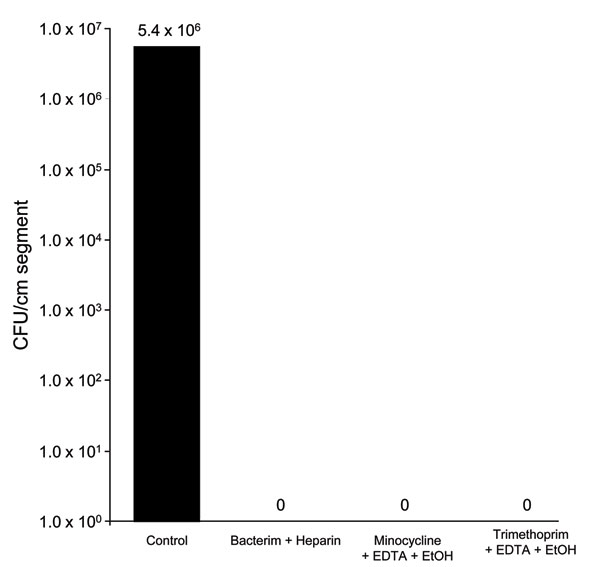Volume 17, Number 9—September 2011
Research
Central Venous Catheter–associated Nocardia Bacteremia in Cancer Patients
Figure 2

Figure 2. Antibiofilm agents inhibition of biomass of Nocardia nova complex biofilms. N. nova complex biofilms were grown for 24 h on silicone disks, placed in 24-well tissue culture plates, and exposed to trimethoprim/sulfamethoxazole (Bacterim) and heparin; trimethoprim, EDTA, and ethanol (EtOH); minocycline, EDTA, and ethanol; or Mueller-Hinton broth medium (control) for 2 h. Minocycline and trimethoprim-based lock solutions completely inhibited the N. nova complex biofilm biomass compared with controls (p = 0.003).
Page created: September 06, 2011
Page updated: September 06, 2011
Page reviewed: September 06, 2011
The conclusions, findings, and opinions expressed by authors contributing to this journal do not necessarily reflect the official position of the U.S. Department of Health and Human Services, the Public Health Service, the Centers for Disease Control and Prevention, or the authors' affiliated institutions. Use of trade names is for identification only and does not imply endorsement by any of the groups named above.